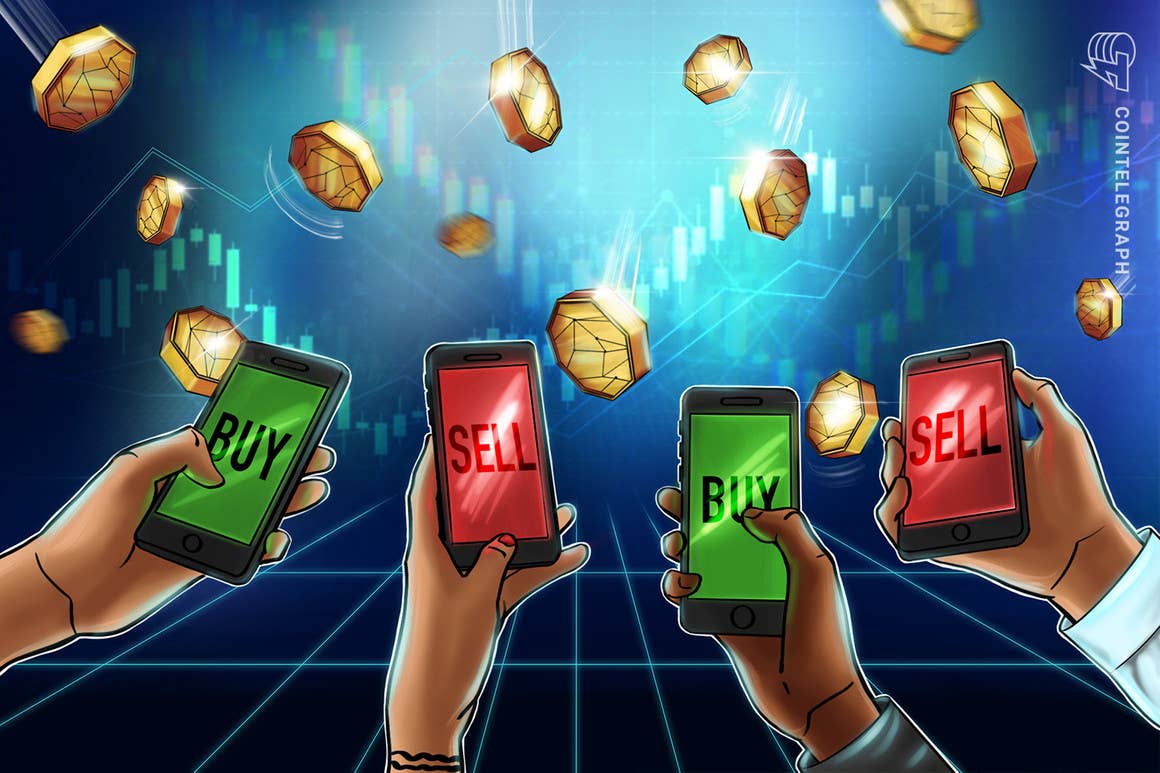Institutions have been at the forefront of the crypto bull run seen since Q4 2020, but now retail investors have been taking the center stage as we
Institutions have been at the forefront of the crypto bull run seen since Q4 2020, but now retail investors have been taking the center stage as well. Bitcoin (BTC) is getting more popular all around the world and it officially became a legal tender in El Salvador on Sept. 7, making it a landmark event for retail and sovereign adoption of the asset.
However, it turned out to be a chaotic event for the premier cryptocurrency token as the country celebrated “Bitcoin Day.” Soon after the day began, BTC’s price suffered a flash crash of over $8,000 to bottom out at $42,900. Even though this flash crash coincided with this major adoption event for the token, its significance for retail consumers and investors far outweighs the short-term price impact seen in the token’s price.
Interesting developments have followed in the aftermath as Fidelity Investment director Jurrien Timmer called this adoption a coming of age for the asset similar to gold in the sixties. Within the Latin American country, global food and beverage brands like McDonald’s, Starbucks and Pizza Hut have now started accepting Bitcoin as a payment option for their products. Large-scale adoption by brands like these is bound to push retail interest in Bitcoin and cryptocurrencies as a whole to new heights, as now it is becoming more evident that there are real use cases for digital currencies.
The founder of Cardano and co-founder of Ethereum, Charles Hoskinson, even predicted that many more countries would eventually follow suit to El Salvador’s adoption. Along with him, whistleblower Edward Snowden also lauded this move on Twitter, mentioning that the pressure is now on competing nations to acquire Bitcoin “even if only as a reserve asset.” Even if major global economies start considering the adoption of BTC as legal tender, it will give a huge boost to retail usage.
Bitcoin adoption by El Salvador has been a big part of the mainstream hype and narrative on cryptocurrencies at the end of the summer. Especially for retail investors, it often could become a case of FOMO (fear of missing out) which, due to the consistent gains of BTC throughout the year, often regret not buying the token a certain number of months ago. This could lead to a huge influx of funds from retail traders in the aftermath.
Retail investors have an eye on crypto
A survey conducted by the Association of Forex Dealers (AFD), a regulatory organization for the foreign exchange market, attempted to gauge investor sentiment on digital currencies in Russia. The results of the survey revealed that 77% of the 502 investors that participated preferred cryptocurrencies like Bitcoin, Ethereum (ETH) and Litecoin (LTC) to traditional financial assets like gold and forex.
Cointelegraph discussed more on this comparison with gold with Jaime Rogozinski, founder of WallStreetBets, a subreddit group made for retail investors. He said, “gold is synonymous with store of value in the U.S., which holds nearly three times more gold than the next three countries combined, but global investors have the opportunity to level the playing field with BTC’s emergence and boundless potential.”
Rogozinski also mentioned that all the other participants in the global economy, apart from the U.S., have an interest in the U.S. Dollar and gold losing the financial hegemony that assets currently hold. Comparing the performance of gold and BTC, there is a vast difference in the results. In the short term, BTC has posted 62.76% gains year-to-date (YTD) and 351.62% yearly gains, while gold has posted 5.79% losses YTD and 7.91% losses yearly.
In addition to Russia, even India is witnessing millennials shifting their interest to cryptocurrency during the global COVID-19 pandemic. Nischal Shetty, CEO of WazirX, an Indian cryptocurrency exchange, told Cointelegraph that in the global perspective, institutional participation has paved the way for retail interest in cryptocurrencies:
“The pandemic had an equal or maybe greater contribution in accelerating crypto adoption, especially in countries like India. In such uncertain times, crypto has provided common people with new ways to earn online whether they are from urban or rural areas.”
According to data provided by WazirX, the exchange has witnessed a 2,648% increase in users signing up from Tier-II and Tier-III cities in India. Users from these two segments of cities are responsible for 55% of the user signup growth in 2021, even outpacing Tier-I cities that showed a growth of 2,375%. Furthermore, 70% of the platform’s users are below the age of 35.
Perhaps echoing the surge in interest is the U.S.-based cryptocurrency exchange CrossTower announcing that they would be expanding their operations to India and “use the country as a hub to expand into other geographies.”
In a country of 1.36 billion people with more than 65% of them being under the age of 35, i.e., over 880 million, the potential for the market to grow further is humungous. Data from…
cointelegraph.com
